Two prominent strategies often come to the forefront in real estate investing: Core-Plus and Value-Add investments. Each approach has unique characteristics, advantages, and challenges that can significantly impact an investor’s portfolio. This article aims to dissect these strategies, clarifying their benefits and drawbacks, thereby assisting investors in making informed decisions. Understanding these strategies is essential not only for seasoned investors but also for newcomers who are navigating the complex landscape of real estate investment. The choice between Core-Plus and Value-Add investments can shape the trajectory of an investor’s financial future, making it imperative to delve deeply into the nuances of each strategy.
Understanding Core-Plus Investments
Core-Plus investments are typically characterized by properties that are already generating stable income with a moderate level of risk. These assets are often located in desirable markets and are well-maintained, offering a reliable cash flow to investors. The appeal of Core-Plus investments lies in their ability to provide a balance between risk and return, making them an attractive option for those who prefer a more conservative approach to real estate investing. Investors in Core-Plus properties often benefit from the stability of established tenants and the potential for slight operational improvements that can enhance returns without the need for extensive renovations or management changes.
Characteristics of Core-Plus Investments
Core-Plus properties generally exhibit the following traits:
- Stable cash flow from existing tenants
- Low to moderate risk profile
- Properties located in prime or improving markets
- Potential for slight operational improvements to enhance returns
- Well-maintained buildings with minimal deferred maintenance
- Strong historical performance and occupancy rates
Additionally, Core-Plus investments often feature properties strategically positioned within their markets, benefiting from local economic growth, infrastructure development, and demographic trends. These factors contribute to the investment’s long-term viability, as they can lead to sustained demand for rental units or commercial space. Core-Plus properties are often part of larger, professionally managed portfolios, which can provide an added layer of security and operational efficiency. The combination of these characteristics makes Core-Plus investments a compelling choice for those seeking a blend of income stability and moderate growth potential.
Advantages of Core-Plus Investments
Investors may find several benefits in pursuing Core-Plus investments:
- Steady Income:
- These properties often provide consistent cash flow, making them appealing for income-focused investors.
- Lower Risk:
- With established tenants and stable occupancy rates, the risk of vacancy is minimized.
- Market Resilience:
- Core-Plus properties are typically situated in markets that are less susceptible to economic downturns.
- Less Management Intensity:
- Core-Plus investments often require less hands-on management compared to Value-Add properties, allowing investors to enjoy passive income.
- Potential for Incremental Value Growth:
- While not as aggressive as Value-Add strategies, Core-Plus investments can still appreciate in value over time, particularly in strong markets.
Moreover, the appeal of Core-Plus investments extends beyond just financial returns. Investors often appreciate the peace of mind that comes with owning properties that are less volatile and more predictable in their performance. This stability can be particularly attractive during periods of economic uncertainty, where the risk of significant losses is a concern. Additionally, Core-Plus investments can serve as a solid foundation for a diversified real estate portfolio, allowing investors to balance higher-risk, higher-reward strategies with more stable income-generating assets.
Exploring Value-Add Investments
Value-Add investments, on the other hand, focus on properties that require some level of improvement or repositioning. This strategy aims to enhance the asset’s value through renovations, operational efficiencies, or strategic leasing. Investors who pursue Value-Add opportunities often do so with the intention of realizing significant returns on their investment by actively managing and improving the property. This hands-on approach can be both rewarding and challenging, as it requires a keen understanding of market dynamics, renovation costs, and tenant needs.
Characteristics of Value-Add Investments
Value-Add properties typically share the following characteristics:
- Underperforming assets with potential for improvement
- Higher risk profile due to the need for renovations or management changes
- Opportunities for increasing cash flow through strategic enhancements
- Properties that may be mismanaged or have high vacancy rates
- Potential for repositioning in a different market segment or tenant demographic
Furthermore, Value-Add investments often present unique opportunities for investors to capitalize on market inefficiencies. For instance, a property that has been neglected or poorly managed may be available at a lower price point, allowing savvy investors to acquire it and implement a turnaround strategy. This could involve cosmetic upgrades, such as modernizing interiors or enhancing curb appeal, as well as operational improvements, such as optimizing property management practices or adjusting rental rates to align with market conditions. The ability to identify and execute on these opportunities is what sets successful Value-Add investors apart from their peers.
Advantages of Value-Add Investments
Investors may find several compelling reasons to pursue Value-Add investments:
- Significant Upside Potential:
- By implementing improvements, investors can substantially increase property value and cash flow.
- Active Management Opportunities:
- Investors can directly influence the success of their investment through hands-on management and strategic decisions.
- Market Dislocation Opportunities:
- Value-Add investments can often be acquired at a discount due to their current underperformance.
- Tax Benefits:
- Renovations and improvements may qualify for tax deductions, providing additional financial advantages.
Moreover, the potential for substantial returns makes Value-Add investments particularly appealing to those with a higher risk tolerance. Investors who are willing to put in the time and effort to improve a property can often see significant increases in both cash flow and overall asset value. This strategy can also foster a sense of accomplishment, as investors witness the tangible results of their efforts in transforming a property into a more desirable asset. Additionally, the ability to reposition a property to meet changing market demands can create long-term value and sustainability, further enhancing the investment’s appeal.
Comparing Core-Plus and Value-Add Strategies
When weighing the two strategies, investors should consider their individual goals, risk tolerance, and investment horizon. Each approach offers distinct pathways to achieving financial objectives. Understanding the differences between Core-Plus and Value-Add investments can help investors make strategic decisions that align with their overall investment philosophy and financial goals. For instance, an investor focused on immediate cash flow may gravitate towards Core-Plus properties, while those seeking long-term appreciation and willing to take on more risk may find Value-Add opportunities more appealing.
Risk vs. Reward
Core-Plus investments generally provide a more stable and predictable return, appealing to conservative investors. In contrast, Value-Add investments present higher risks but also the potential for greater rewards, making them suitable for those willing to engage in active management. The risk-reward trade-off is a critical consideration for investors, as it can influence not only the choice of strategy but also the overall investment approach. Investors must assess their comfort level with risk and their capacity to manage potential challenges associated with each strategy.
Investment Horizon
Investors with a shorter time horizon may prefer Core-Plus investments for their immediate cash flow, while those with a longer-term perspective might lean towards Value-Add opportunities to capitalize on property appreciation over time. The investment horizon can significantly impact the choice of strategy, as it dictates the level of risk an investor is willing to take and the types of returns they expect. For example, investors looking to generate income quickly may prioritize Core-Plus properties, while those with a longer time frame may be more inclined to invest in Value-Add properties that require time to realize their full potential.
Market Conditions
The prevailing market conditions can also influence the choice between these strategies. In a strong economy, Value-Add investments may thrive, while Core-Plus properties may offer stability during economic downturns. Investors should remain attuned to economic indicators, such as employment rates, interest rates, and local market trends, as these factors can impact the performance of both Core-Plus and Value-Add investments. Additionally, understanding the cyclical nature of real estate markets can help investors make informed decisions about when to enter or exit specific investments.
Additional Considerations for Investors
Beyond the fundamental characteristics of Core-Plus and Value-Add investments, there are several additional considerations that investors should keep in mind when evaluating these strategies. One important factor is the investor’s level of experience and expertise in property management and renovation. Investors who possess a strong background in real estate may feel more comfortable pursuing Value-Add opportunities, while those with less experience may prefer the relative simplicity of Core-Plus investments. Furthermore, the availability of capital and financing options can also play a crucial role in determining which strategy is more feasible for an investor. Core-Plus properties may require less upfront capital for renovations, while Value-Add investments often necessitate significant financial resources for improvements.
Networking and Partnerships
Building a strong network of industry professionals can also enhance an investor’s ability to successfully navigate the complexities of both Core-Plus and Value-Add investments. Collaborating with experienced property managers, contractors, and real estate agents can provide valuable insights and resources that can lead to more informed decision-making. Additionally, forming partnerships with other investors can help mitigate risks and pool resources for larger projects, particularly in the case of Value-Add investments that require substantial capital and expertise. Networking within the real estate community can also open doors to off-market opportunities, allowing investors to access properties that may not be widely advertised.
Long-Term Strategy and Diversification
Ultimately, the choice between Core-Plus and Value-Add investments should align with an investor’s long-term strategy and overall portfolio diversification. A well-rounded investment approach may involve a combination of both strategies, allowing investors to balance the stability of Core-Plus properties with the growth potential of Value-Add opportunities. This diversification can help mitigate risks associated with market fluctuations and provide a more resilient investment portfolio. Investors should regularly review their portfolios and adjust their strategies as needed to ensure alignment with their financial goals and market conditions.

